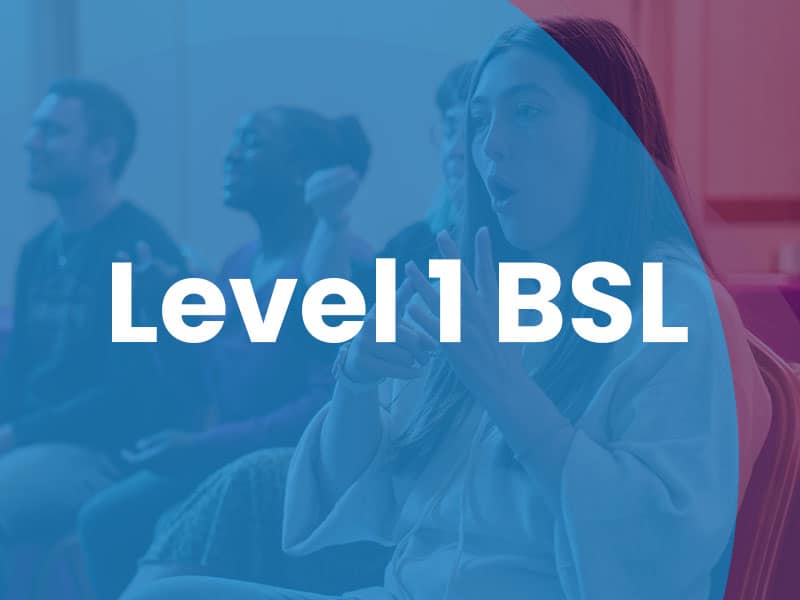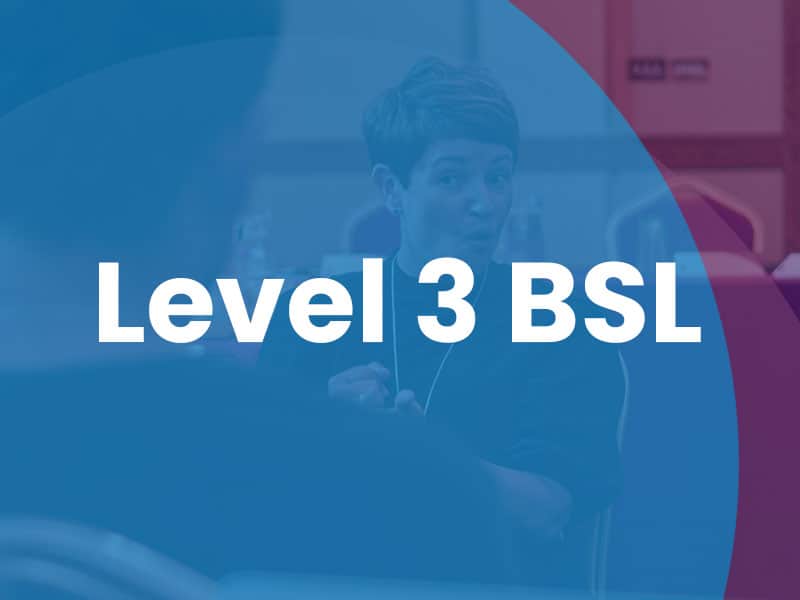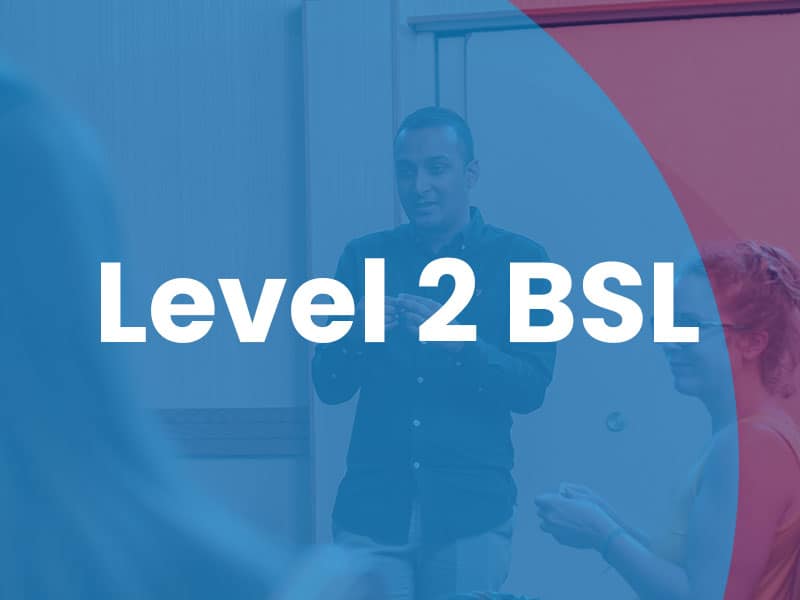
Course aim
This course is designed to teach learners to communicate with Deaf people in British Sign Language (BSL) on a range of topics that involve simple, everyday language use. They will gain basic skills and confidence in production and reception of BSL.
This is a taster course, including the first 5 lessons from the full Level 1 BSL course.
Course structure
The course contains 5 lessons which can be completed separately. Each lesson covers vocabulary, grammar, receptive and productive skills.
Course objectives
At the end of the course, learners will be able to:
- Understand about deaf and BSL culture
- Understand and use fingerspelling to spell simple words
- Introduce themselves in BSL
- Talk about basic numbers and days of the week
- Talk about basic feelings and emotions

Course Aim
The Level 3 Certificate in British Sign Language (BSL) meets the learning needs of those who already have competence in BSL at Level 2 and are interested in developing their skills and knowledge. Successful learners must be able to demonstrate competence at Level 3 of the UK Occupational Language Standards (Instructus 2012). This means that the learner will be able to understand and use varied BSL in a range of work and social situations.
The learner will develop an advanced knowledge of the structure and function of British Sign Language and an understanding of the Deaf Community and Deaf Culture.
The assessment criteria is taken from the UK Occupational Language Standards at Level 3 (‘Varied’ language use). They are equivalent to those for Modern Foreign Languages at AS and A2 level. The qualification is at Level 3 on the Qualification & Credit Framework (RQF), Advanced Level on the Language Ladder, and Level B2 on the Common European Framework (CEFR). Application of these standards have been applied to the units within the qualification.
Course Structure
Candidates must demonstrate both receptive and productive BSL skills at level 3, and in all of the six topics that make up this qualification. Assessments may cover any of the topics listed in this qualification.
The natural context of using BSL is in two-way interactions (discussions, conversations, debates etc.), as well as one-way interactions (monologues, presentations etc.). The candidate is therefore expected to demonstrate receptive and productive skills in both two-way and one- way interactions. Signature recommends the best approach to teaching and assessing this qualification is by covering both receptive and productive skills together.
Course Objectives
Successful completion of this qualification can be used as evidence of the language skills needed in order to be able to operate independently and at an advanced level in the target language. It is useful for those who work on a regular basis with Deaf people (for example social workers, teachers of the Deaf, communicators, voluntary workers, workers within Deaf organisations, schools, etc), those who aspire to work in these contexts, and those who wish to expand their knowledge and skills in British Sign Language.

Course aim
This course is designed to enable learners to develop their skills to communicate with Deaf people using British Sign Language (BSL) in a range of everyday situations. The qualification will allow learners to participate in longer and more varied conversations than at Level 1. The course will develop communication in BSL about real life, routine, and daily experiences. The learner will be able to deal with most routine communication and have enough understanding of grammar to cope with some non-routine communication. Learners should be taught a number of regional variations in sign language.
The course has been mapped against A2 of the Common European Framework of Reference for Languages (CEFR).
Course structure
The course is divded into 25 lessons which can be completed separately. To achieve the full Signature Level 2 Certificate in British Sign Language qualification, candidates must complete three assessments.

Course aim
This course is designed to teach learners to communicate with Deaf people in British Sign Language (BSL) on a range of topics that involve simple, everyday language use. They will gain basic skills and confidence in production and reception of BSL.
The course is mapped against A1 of the Common European Framework of Reference for Languages (CEFR).
Course structure
The course is divided into 15 lessons which can be completed separately. Each lesson covers vocabulary, grammar, receptive and productive skills.
Course objectives
At the end of the course, learners will be able to:
- Understand and use a limited range of simple words and sentences in BSL
- Take part in simple, everyday conversations in BSL
- Give and follow simple directions or instructions in BSL
- Give and follow simple familiar statements or descriptions in BSL.
